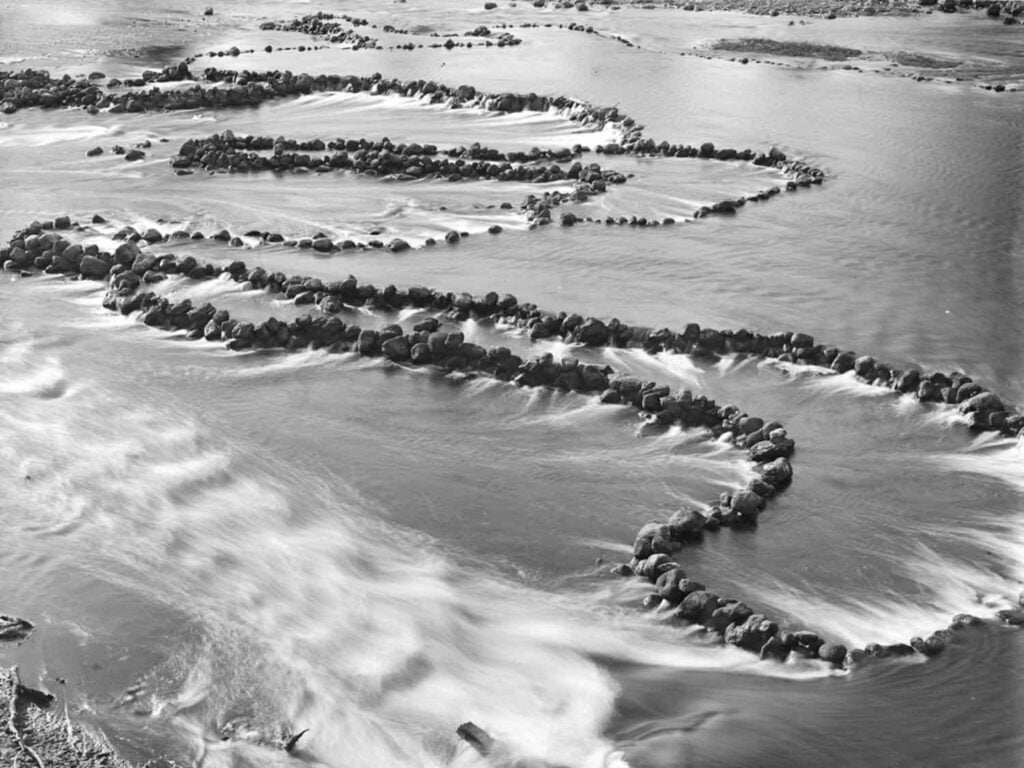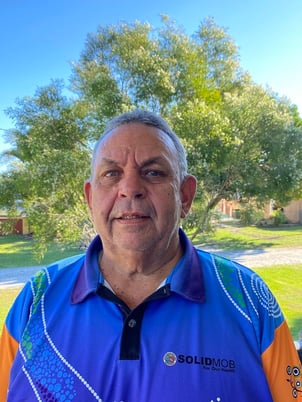The future-ready approach to Caring for water and Country

The version of this article that was originally uploaded to Water Source has been rectified. WSP apologises for any misunderstandings this may have caused.
When it comes to living on the world’s driest continent, there has never been a more important time for us to come together as professionals to care for water and Country, considering the uncertain times we are living in.
A pandemic, bushfires, droughts, floods and the escalating impacts of extreme weather conditions are placing considerable strain on our natural resources, economic growth and indeed our way of life. But in a world we can’t predict, there is one constant — we need water to survive. And in Australia, the connection between water and our cultural heritage is inseparable.
The theme for National Water Week 2021, "Caring for water and Country", is a great opportunity for us to deepen our understanding of First Nations peoples’ knowledge of protecting and sustaining our water and lands for more than 65,000 years.
To this end, we had a yarn with two Indigenous Services Specialists working for WSP in Australia: Michael Hromek, Technical Executive — Indigenous (Architecture) Design and Knowledge, and Russell Reid, Senior Aboriginal Affairs and Participation, as well as Dean Maguire, the firm’s Section Executive for Queensland’s water business.
The cultural significance of water
Water is core to life, health and wellbeing for Aboriginal and Torres Strait Islander peoples. In a way that’s true for all humans, yet the relationship that Indigenous people have with water is more than presence, use and need. This relationship involves ancient history with the land and unique systems of law, customs and spirituality that regulates both land and water management.
Protecting and managing water is a custodial and intergenerational responsibility that Aboriginal people take very seriously.
“Water is entwined to our sense of identity as Aboriginal and Torres Strait Islander peoples,” Hromek said.
“Its cultural and spiritual values relate to a range of uses and issues, such as languages, songlines, stories, sacred places, customary uses, flora and fauna associated with bodies of water, salt water and sweet water [drinking water] as well as recreational, ceremonial, hunting, fishing and foraging activities.
“We see the essence of Indigenous peoples’ culture, spirituality and life as a holistic entity — one that connects humanity and the environment at its deepest level. This places First Nations’ people in a unique situation as interest holders in the management of natural resources such as water.
“For millennia, our people have inhabited this land. In his book Dark Emu, author Bruce Pascoe demonstrates the sophisticated agricultural society our people had with an ingrained, spiritual stewardship of water and Country. He discusses how our continent was harvested in ways that can offer contemporary environmental and economic solutions to today’s challenges.
“For example, he shows how Aboriginal people cultivated the land through manipulation of water flows, vegetation and firestick practice. Around Melbourne, the Aboriginal people would move earth, weave baskets and make daisy chains to build weirs, dams and billabongs to manage water efficiently and sustainably.
“Fast forward to the present day, and we have much to learn from our Elders’ past practices in water management. If we want to care for both water and Country, we need to sustain the cultural and spiritual values of this valuable resource.”
 The Brewarrina fish traps are examples of farming practices that occurred in the rivers and creeks within Moree
The Brewarrina fish traps are examples of farming practices that occurred in the rivers and creeks within Moree
In some recent work undertaken in Moree for the Special Activation Precinct (SAP) — a government-led new business hub specialising in agribusiness, logistic and food processing — Hromek said that discussions with the Gamilaraay peoples were focused on rehabilitation of the riparian corridors as well as the creation of walking track to the waterways for cultural purposes.
“Many of the lands within the Moree SAP are sacred and hold cultural significance to the Gamilaraay peoples. They also consist of waterways and natural environments that contain bushfoods and traditional bush medicines. Being able to have conversations with them and bring that insight back to government is valuable and key to creating lasting outcomes for the SAP,” he said.
Shifting the dial: from recognition to action
While there is no doubt that Australia has a long way to go in Caring for water and Country, we have made a start. Interestingly, 2021 marks 20 years since the creation of Reconciliation Australia and almost three decades since the initiation of our formal reconciliation process.
According to Reid: “There is now far greater awareness of First Nations cultures and knowledges. More Australians, and particularly those in industry such as water, understand the impacts that British Colonialism and modern Australia have had on First Nations lands and communities.
“We are seeing more people asking the hard questions, speaking the truth, and wanting to know about how they can positively impact the issues affecting Aboriginal and Torres Strait Islander peoples — in society, the workplace and the built environment.
“Water is a very divisive issue, as the Murray-Darling Basin plan has shown us to date. Without getting into the nitty gritty of the various stakeholders’ gripes, it’s clear for everyone to see that the Murray-Darling River system is in a poor state and in dire need of rehabilitation.
“Irrespective of which side of the fence you sit on, it’s vital that the way we manage water in Australia evolves — it needs to be reflective of the diversity of our communities. And given that Indigenous people have 65,000 years’ experience in managing water effectively in this country, we need to ensure they are involved in the decision-making process and at a much earlier stage. It’s that simple.”
Education is leading the way
Success stories are now emerging of traditional owners sharing their cultural water management knowledge with governments and water utilities to bring new life to sites. The Coombool Swamp near the South Australian-New South Wales border is one example of Traditional Owners working alongside federal and state Governments to restore wetlands in the Chowilla Regional Reserve to help manage the environment and water delivery.
In Queensland, the Logan Water Partnership (of which WSP is a long-term member), has been establishing relationships with Indigenous peoples to gain a better understanding of the land and environment on which its facilities reside.
Maguire said: “Exploring an infrastructure project’s connection to Country is a journey that we are increasingly taking with our clients. We want to better understand the significance of the places on which facilities are sited now or in the future. If we can understand the importance of the environment that we are impacting, we have an opportunity to make reparations simply by being better informed.
“The more time we spend with Indigenous people that have a deep connection to a particular Country, the more we learn, and the better designers we become. A lot of this learning is spiritual or symbolic, but it’s nevertheless important as it provides another lens to examine the work that we’re doing.
“The challenge we have is to extend that learning into meaningful action, not reaction. Sure, many of us have a basic understanding of the Country on which projects are located, and we do what we can to include cultural heritage and knowledge in our designs and foster employment through our Reconciliation Action Plans, but how do we take that to the next level?
“For example, with wastewater treatment plants, is it respectful to put treated effluent back into water ways? While we know the licence conditions that need to be met, do we have guidelines from the Indigenous people as to how this impacts Country, or are we aware of the cultural knowledge that might allow us to engineer a better outcome?
“For me, at this point in the Australian water industry’s evolution, our next step is about getting interconnected with Country and establishing trust.
“While many levels of governments have direct relationships with Indigenous communities with respect to essential infrastructure, there is an opportunity for planning organisations, engineering firms, construction companies, as well as water utilities and operators, to do so as well. The more of us that are in the same room gaining the same knowledge and talking about the same challenges, the better the outcomes will be. Put simply, it’s the power of diversity and transparency at play.
“At the end of the day, both Indigenous and non-Indigenous people want the same things: to care for water and to care for Country, which essentially is the environment — it’s our backyard. In my mind, the solution is a lot less difficult than we think.
“With knowledge, understanding and trust, we can unlock the value of water and sustain the cultural and spiritual values of Country.”



